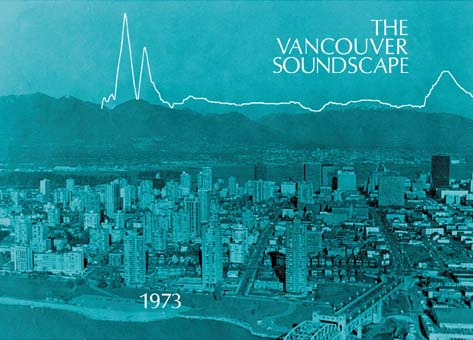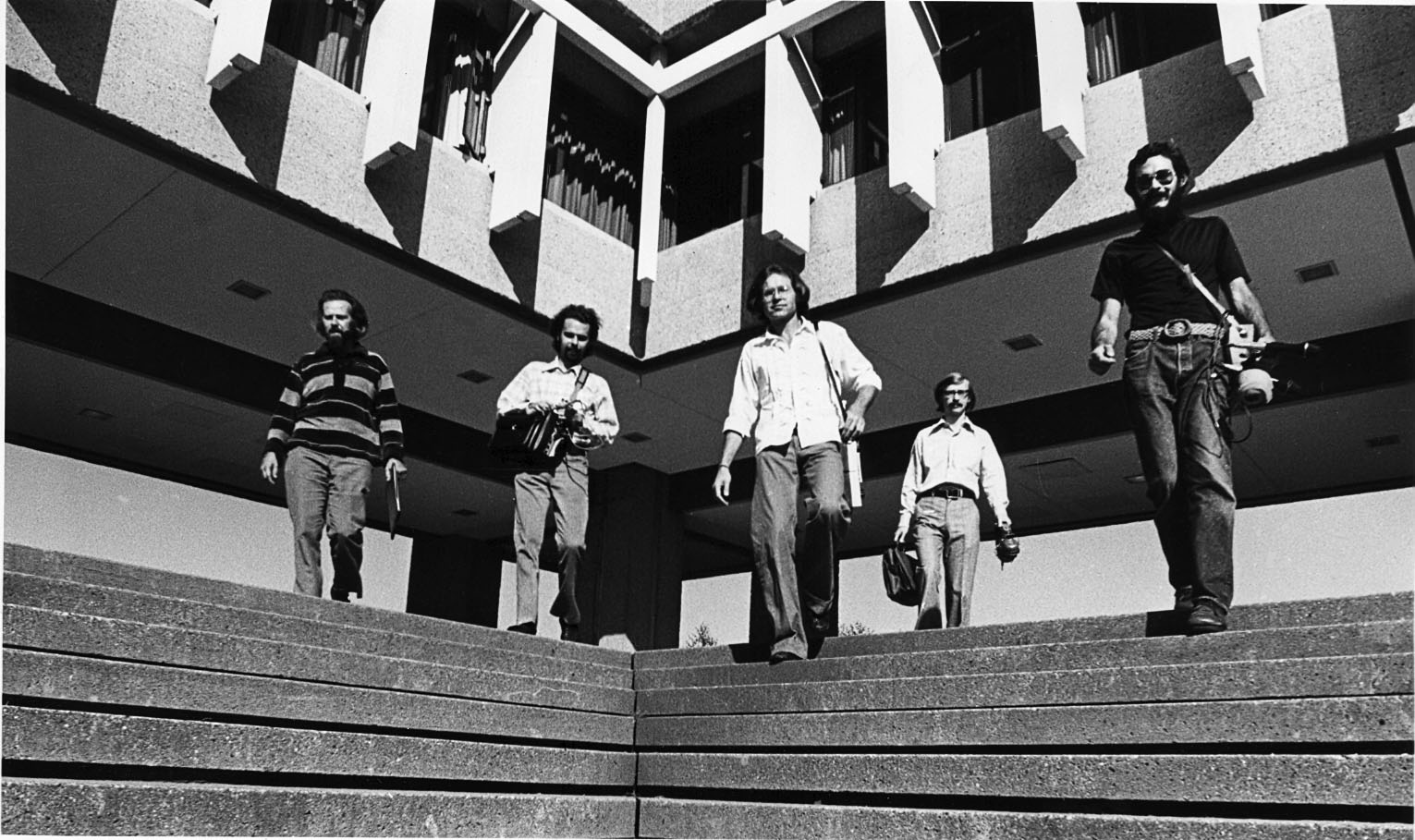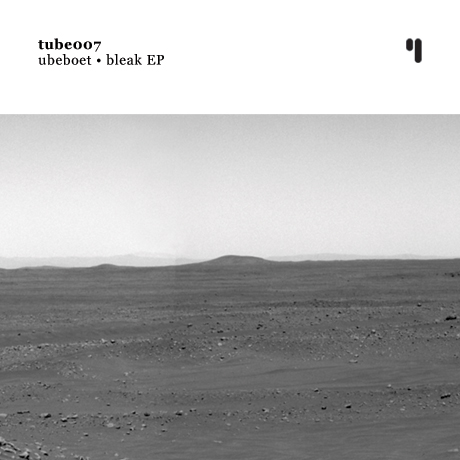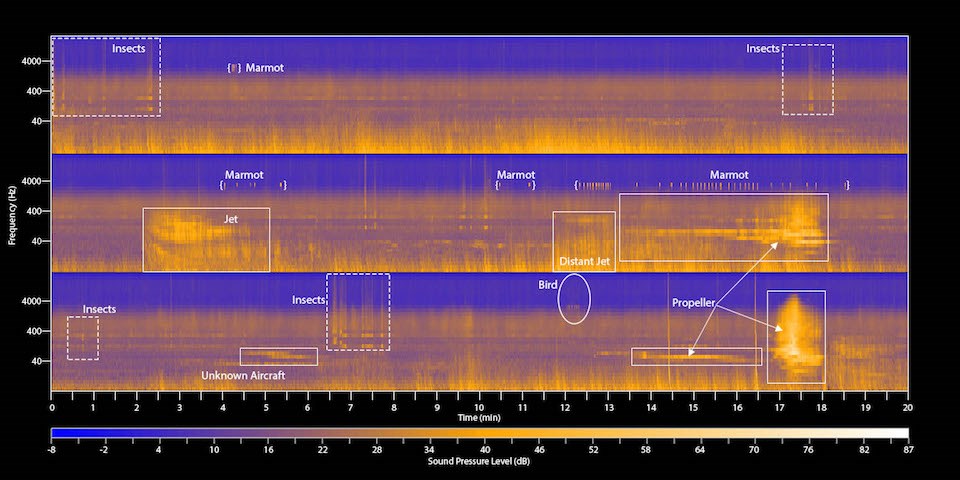Inizierà venerdì 22 al Castello di Beseno (Rovereto) il VII Simposio Internazionale FKL sul Paesaggio Sonoro.
Archivi tag: soundscape
Petite symphonie intuitive pour une paysage de printemps
Luc Ferrari – Petite symphonie intuitive pour une paysage de printemps (1973-74)
A review by Blue Gene Tyranny
A lovely work of electro-acoustic music by one of the French pioneers of musique concrète, “Petite Symphonie Intuitive Pour un Paysage de Printemps” (“Little Intuitive Symphony for a Spring Landscape”) recreates the composer’s experiences during a climb toward sunset on the Causse Méjean, a high plateau in the Massif Central, including his recollection of a shepherd’s flute and its reverberations across the landscape. The flute sounds and multiple echoes continue in changing musical modes throughout the piece (the tonic redefined by electronic drones), blending together with sounds of the countryside and conversational fragments from the human presence to create a beautiful sonic landscape of 25 minutes duration.
(((.foundsoundscape.)))
(((.foundsoundscape.))) is “a live radio collage of foundsound places to underscore your personal spaces”. It’s curated by Janek Schaefer and features 1000 different locations, by 100 different artists.
Foundsoundscape was inspired by the very first Digital Radio station in the UK, that simply played a recording of a rural location. Radio you could just leave running to add a peaceful ambience to your environment indoors. It heralded a new media paradigm, as digital broadcasting offered more capacity than requred for the first time, and that space needed filling. At the same time on TV, Channel 4 was broadcasting Big Brother live 24hours, and at night I loved to tune-in my analogue TV sets all over the house, and the shed, so I could hear the housemates gently sleeping as I worked through the night. Since then infomercials, and gambling TV have taken over, and I greatly miss that sense of real-time space, that does not demand your attention. Foundsoundscape quietly underscores your environment, by creating new ones from others.
Virtual Acoustic Modelling
Con il termine “Virtual Acoustic Modelling” si intende la ricostruzione computerizzata dell’acustica di un ambiente. In pratica si realizza un modello acustico di un ambiente mediante il quale è possibile elaborare dei suoni e ascoltarli con la riverberazione e la risposta in frequenza di quell’ambiente.
Se l’ambiente è esistente e accessibile, la cosa è relativamente semplice perché è possibile rilevare la risposta all’impulso di quel luogo. Poi si esegue una convoluzione fra un qualsiasi suono privo di riverberazione (tipicamente registrato in camera anecoica) e la risposta all’impulso per immergere il suono in quell’ambiente (per una spiegazione più dettagliata, vedi Graziani, Riverbero mediante Convoluzione).
 La difficoltà nasce quando l’ambiente in esame non è più accessibile, per esempio è stato distrutto o è cambiato radicalmente nel corso degli anni, come nel caso dell’Abbazia di St. Mary a York, della quale rimangono solo rovine (immagine ingrandibile a lato). In questo caso è necessario stimare la risposta all’impulso dell’edificio originale, prendendo in considerazione la sua architettura in termini di volumi e materiali, servendosi di un software di simulazione per calcolare le riflessioni e l’assorbimento a varie frequenze.
La difficoltà nasce quando l’ambiente in esame non è più accessibile, per esempio è stato distrutto o è cambiato radicalmente nel corso degli anni, come nel caso dell’Abbazia di St. Mary a York, della quale rimangono solo rovine (immagine ingrandibile a lato). In questo caso è necessario stimare la risposta all’impulso dell’edificio originale, prendendo in considerazione la sua architettura in termini di volumi e materiali, servendosi di un software di simulazione per calcolare le riflessioni e l’assorbimento a varie frequenze.
Questo progetto viene portato avanti da un team dell’Università di York. In questa pagina il progetto viene descritto in dettaglio, con alcuni esempi.
nayral-ro
Un altro lavoro di ::vtol::
The orchestra consists of 12 robotic manipulators of various designs, each of which is equipped with a sound-transmitting speaker. The manipulators, combined together, form a single multi-channel electronic sound orchestra. Due to constant displacement speakers in space, changing direction of the sound and the algorithms for generating compositions, the orchestra creates a dynamic soundscape. In order to interact with the orchestra, controller Leap Motion is used, that allows to control robots and sound by simple hands gestures in the air – similarly to conducting an orchestra.
The project is based on the idea of a combination of modern music, computer, interactive and robotic concepts and approaches for the creation of works of art. In many ways, it is inspired by well-known works that were presented in the recent past, such as Pendulum Choir (2011) and Mendelssohn Effektorium (2013). However, Nayral Ro is different from these projects in many ways. Its algorithmic system, in which sound and musical composition are being produced, is real time, and the acoustic environment also changes simultaneously with the process of creating the musical piece. Also, the whole process is completely subordinated by the “conductor”, so this a role is similar to such of a composer, performer and operator at the same time.
Creation of more sophisticated versions, more subtly revealing the potential of Leap Motion for tuning to the movement and changes in sound, is being planned for the future development.
Stereopublic
Stereopublic è un progetto lanciato dal sound artist australiano Jason Sweeney. Il fine è quello di individuare e segnalare i punti più tranquilli di una città e condividerli. Sweeney, inoltre, compone un breve brano di ambient music per ogni luogo segnalato.
Si tratta di un progetto a libera partecipazione, nel senso che, dopo essersi registrato, chiunque può segnalare un luogo in qualsiasi città. Sulla mappa si vedono già parecchie città. Nell’immagine, alcuni luoghi di Londra.
È stata anche sviluppata una applicazione per cellulare, purtroppo solo per iPhone/iPad, il che limita notevolmente le potenzialità di un progetto di questo tipo, che invece conta molto sulla partecipazione pubblica.
stereopublic: crowdsourcing the quiet is a participatory art project that asks you to navigate your city for quiet spaces, share them with your social networks, take audio and visual snapshots, experience audio tours and request original compositions made using your recordings.
Phantom Terrains
Streams of wireless data surge from internet exchanges and cellphone relays, flowing from routers to our devices and back again. This saturation of data has become a ubiquitous part of modern life, yet it is completely invisible to us. What would it mean to develop an additional sense which makes us continuously attuned to the invisible data topographies that pervade the city streets?
Phantom Terrains is an experimental platform which aims to answer this question by translating the characteristics of wireless networks into sound. By streaming this signal to a pair of hearing aids, the listener is able to hear the changing landscapes of data that surround them. Network identifiers, data rates and encryption modes are translated into sonic parameters, with familiar networks becoming recognizable by their auditory representations.
The project challenges the notion of assistive hearing technology as a prosthetic, re-imagining it as an enhancement that can surpass the ability of normal human hearing. By using an audio interface to communicate data feeds rather than a visual one, Phantom Terrains explores hearing as a platform for augmented reality that can immerse us in continuous, dynamic streams of data.
Below the map is an audio recording of part of the same walk, as heard through the Phantom Terrains sonification interface. The sound of each network is heard originating from the router’s geographical location, producing clicks whose frequency rises with the signal strength — akin to a layered series of Geiger counters. Routers with particularly strong signals “sing” their network name (SSID), with pitch corresponding to the broadcast channel, and a lower sound denoting the network’s security mode.
I tempi sono cambiati
Bologna. Il 23 giugno del 1643, su richiesta dei professori e studenti dell’Università fu avanzata al Comune una perentoria protesta affinché fosse fatto divieto al transito per i carri attorno all’Archiginnasio per consentire agli studenti di studiare nel dovuto silenzio. L’istanza fu accolta.
[Tratto da Sounday Times, Il rumore e la città – considerazioni sul convegno la città nel rumore il rumore nella città]
Questo non per fare un elogio dei bei tempi andati, ma solo per sorridere un po’ 🙂 . In fondo parliamo di quasi 400 anni fa.
Cities & Memory
 Cities & Memory è l’ennesima mappa sonora dell’orbe terracqueo, ma è anche una delle più curate perché ha varie sezioni, ordinamenti e collezioni.
Cities & Memory è l’ennesima mappa sonora dell’orbe terracqueo, ma è anche una delle più curate perché ha varie sezioni, ordinamenti e collezioni.
Cities and Memory is a global field recording & sound art work that presents both the present reality of a place, but also its imagined, alternative counterpart – remixing the world, one sound at at time.
Every faithful field recording document on the sound map is accompanied by a reworking, a processing or an interpretation that imagines that place and time as somewhere else, somewhere new. The listener can choose to explore locations through their actual sounds, or explore interpretations of what those places could be – or to flip between the two different sound worlds at leisure.
There are currently [dec 2014] more than 350 sounds featured on the sound map, spread over 23 countries.The sounds cover parts of the world as diverse as the hubbub of San Francisco’s main station, traditional fishing women’s songs in Lake Turkana, the sound of computer data centres in Birmingham, spiritual temple chanting in New Taipei City or the hum of the vaporetto engines in Venice.
The sonic reimaginings or reinterpretations can take any form, and include musical versions, slabs of ambient music, rhythm-driven electronica tracks, vocal cut-ups, abstract noise pieces, subtle EQing and effects, layering of different location sounds and much more.
The project is completely open to submissions from field recordists, sound artists, musicians or anyone with an interest in exploring sound worldwide – more than 60 contributors have got involved so far.
Cities and Memory takes its name and original inspiration from Italo Calvino’s book Invisible Cities, which explores how people can experience the same place in dramatically different ways.
Radio Aporee
Il progetto Radio Aporee ::: Mappe Sonore Collettive nasce nel 2006 con l’intento di sviluppare una cartografia sonora con geolocazione di suoni provenienti da vari ambienti, da quelli più o meno urbanizzati fino alla natura.
La mappa è qui. All’inizio si apre su un suono (cerchio rosso). Zoomate all’indietro fino a vedere altri cerchi rossi che indicano la locazione di altri suoni (vedi immagine sotto).
È possibile aggiungere altri suoni alla mappa cliccando sulla locazione dove si vuole piazzare il suono.
World Sound Mix
Il World Sound Mix mixa senza sosta suoni da tutto il mondo. I suoni provengono dall’archivio del FreeSound Project.
Too late, too far
 Sam Salem (n. 1982) è un compositore di Manchester che lavora principalmente in area acusmatica e audio/video.
Sam Salem (n. 1982) è un compositore di Manchester che lavora principalmente in area acusmatica e audio/video.
È principalmente interessato ai suoni degli ambienti urbani. Molte delle sue composizioni si focalizzano sui suoni di luoghi specifici, ciò nonostante la sua musica non ha niente a che fare con l’ambient. Invece Salem esplora l’ambiente sonoro cercando di rivelare la musicalità nascosta nei suoni ambientali. In questo senso i suoi lavori vanno al di là del semplice paesaggio sonoro.
Quello che ascoltiamo qui, Too late, too far è del 2014. Note dell’autore:
Too late, too far is part of a larger work entitled The Fall, composed between 2012 and 2014. The compositional process began during a residency at STEIM in December 2011: Amsterdam was the source from which I collected the materials for this piece.
I think now of the unwitting owners of actions contained herein: the cyclists and joggers of Vondelpark, the man on a bridge who offered a bike for a cigarette, the swans calling across the Red Light District, the choir of Sint-Nicolassbasiliek, and the countless others, long since dispersed but not forgotten: shouting, singing, laughing, swearing, clapping. I think also of the creaks and rhythms of rocking boats, of passing trams, the ubiquitous bells and horns, the rain, wind and lapping water, and the 5am fireworks on New Year’s Day. I consider these materials as fragments of sound, but also, now, as fragments of time. Sometimes their shimmering light is obscured, sometimes it is revealed.
This work, “peopled by bad dreams” (and the occasional good one), balances somewhere between loss and hope: after more than two years of work, this is its final character.
Canti delle balene in tempo reale
whalesong.net è un interessante sito la cui “mission” è quella di promuovere la conservazione e la tutela dell’ambiente sottomarino.
In questa ottica, hanno sviluppato il progetto WhaleSong destinato a diffondere in tempo reale, via internet, le voci delle balene e di altri mammiferi marini mediante il sistema schematizzato nella figura qui sotto.

Si tratta, sostanzialmente, di un microfono sottomarino (idrofono) collegato ad un trasmettitore che invia i segnali raccolti dall’idrofono a un ricevitore piazzato sulla costa. Da cui i segnali vengono instradati nella rete grazie ad un server audio e possono essere ascoltati grazie ad una internet radio raggiungibile dal sito di cui sopra o direttamente da questo link.
Fisicamente, il tutto è piazzato sull’isola di Maui, nelle Hawaii, uno dei più importanti siti di whale-watching del globo.
Naturalmente non sempre è possibile contare sulla presenza di vari mammiferi marini nel sito in quanto questi animali compiono lunghe migrazioni. In questo caso la radio trasmette le registrazioni dell’anno precedente.
The Vancouver Soundscape
 The World Soundscape Project (WSP) was established as an educational and research group by R. Murray Schafer at Simon Fraser University during the late 1960s and early 1970s. It grew out of Schafer’s initial attempt to draw attention to the sonic environment through a course in noise pollution, as well as from his personal distaste for the more raucous aspects of Vancouver’s rapidly changing soundscape. This work resulted in two small educational booklets, The New Soundscape and The Book of Noise, plus a compendium of Canadian noise bylaws. However, the negative approach that noise pollution inevitably fosters suggested that a more positive approach had to be found, the first attempt being an extended essay by Schafer (in 1973) called ‘The Music of the Environment’, in which he describes examples of acoustic design, good and bad, drawing largely on examples from literature.
The World Soundscape Project (WSP) was established as an educational and research group by R. Murray Schafer at Simon Fraser University during the late 1960s and early 1970s. It grew out of Schafer’s initial attempt to draw attention to the sonic environment through a course in noise pollution, as well as from his personal distaste for the more raucous aspects of Vancouver’s rapidly changing soundscape. This work resulted in two small educational booklets, The New Soundscape and The Book of Noise, plus a compendium of Canadian noise bylaws. However, the negative approach that noise pollution inevitably fosters suggested that a more positive approach had to be found, the first attempt being an extended essay by Schafer (in 1973) called ‘The Music of the Environment’, in which he describes examples of acoustic design, good and bad, drawing largely on examples from literature.
Schafer’s call for the establishment of the WSP was answered by a group of highly motivated young composers and students, and, supported by The Donner Canadian Foundation, the group embarked first on a detailed study of the immediate locale, published as The Vancouver Soundscape, and in 1973, on a cross-Canada recording tour by Bruce Davis and Peter Huse, the recordings from which formed the basis of the CBC Ideas radio series Soundscapes of Canada. In 1975, Schafer led a larger group on a European tour that included lectures and workshops in several major cities, and a research project that made detailed investigations of the soundscape of five villages, one in each of Sweden, Germany, Italy, France and Scotland. The tour completed the WSP’s analogue tape library which includes more than 300 tapes recorded in Canada and Europe with a stereo Nagra. The work also produced two publications, a narrative account of the trip called European Sound Diary and a detailed soundscape analysis called Five Village Soundscapes. Schafer’s definitive soundscape text, The Tuning of the World published in 1977 [trad. it. “Il Paesaggio Sonoro”, Ricordi/Unicopli], and Barry Truax’s reference work for acoustic and soundscape terminology, the Handbook for Acoustic Ecology published in 1978, completed the publication phase of the original project.
Excerpts from The Vancouver Soundscape 1973:
The WSP group at SFU, 1973; left to right: R. M. Schafer, Bruce Davis, Peter Huse, Barry Truax, Howard Broomfield

Ubeboet
 Searching the old releases from Test Tube, I found this EP by Ubeboet, a sound artist based in Madrid involved in electronic/experimental music since mid 90’s. This work, titled Bleak EP, is dated 2004.
Searching the old releases from Test Tube, I found this EP by Ubeboet, a sound artist based in Madrid involved in electronic/experimental music since mid 90’s. This work, titled Bleak EP, is dated 2004.
Bleak EP, by Ubeboet, is one of those kind of releases that lives on lasting relationships and on constant reintegration processes, achieving ‘that’ multidimensionality (big word) typical of the acoustic universe, giving so much freedom to the listener, that he (or she) will diminish or amplify the particular singularities of the sound particles that go in and out of the brain.
This work could be very easily integrated into the art of installationism, although never leaving the ‘soundscape’ genre. A constant struggle to arrive (or at least try to) an ideal of ‘musique concrète’. Holding itself to the capturing of sound landscapes, submitting them to a low-frequency treatment, Ubeboet breathes a comforting ‘less is more’ ambient, (re)created and integrated into unhabited sound habitats, or sometimes directly injected into the overcrowded urban territory. Ubeboet rests in the complex world of the ‘anti-fast listening’, where the perception and the raw and naked power of the music are intimately connected. A not-easy, not-clear and not-resolved world, into which we are forced to submerge and seek for the unknown. Highly recommended.
[Bruno Barros]
Two excerpts
Soundscape
 |
I biologi impegnati nello studio degli ecosistemi dinamici imbottiscono di microfoni una sezione di territorio per ottenere una mappa audio dell’ambient.
Questo procedimento si basa sulle idee del pioniere della bioacustica Bernie Krause, che ha coniato il termine “biophony” e l’ipotesi della nicchia acustica, secondo la quale lo spettro audio di ogni ecosistema è finemente suddiviso fra le specie che lo abitano (ovviamente con l’esclusione dell’uomo che occupa brutalmente tutte le bande).
Si ottengono, così, dei sonogrammi come quelli a destra (click per ingrandire) che vengono poi analizzati per identificare le specie che abitano l’ecosistema.
Venti di Titano
Questa non è una composizione musicale e forse è noiosa, ma ascoltatela.
È il suono registrato dal microfono posto a bordo della sonda Huygens, parte del progetto Cassini di esplorazione dei pianeti esterni, durante la sua discesa di un anno fa su Titano, satellite di Saturno e unica luna del sistema solare con un’atmosfera.
Per quelli che sanno sognare…
Interspecies

La mission di Interspecies è di coinvolgere gli artisti per migliorare le relazioni fra esseri umani e animali. Una delle cose interessanti è che questi mettono a contatto diretto i musicisti con i cetacei, tentando di instaurare una comunicazione sonora.
Molto materiale, anche sonoro, sui cetacei è disponibile sul sito, incluso il disco Belly of the Whale e un attirante articolo sulla logica del linguaggio delle balene.







